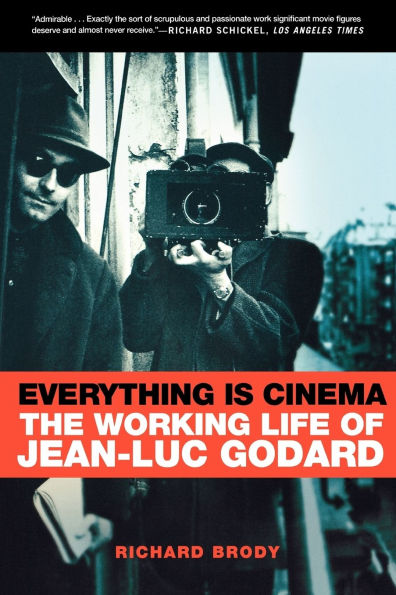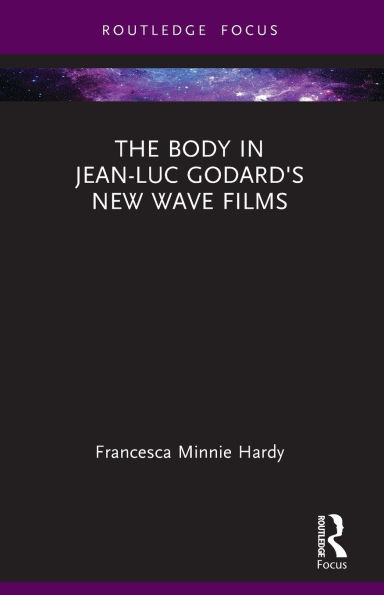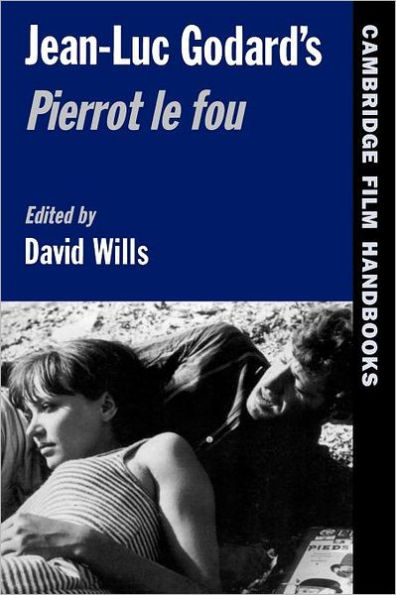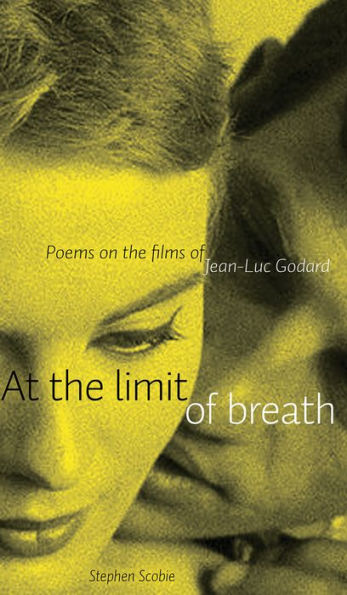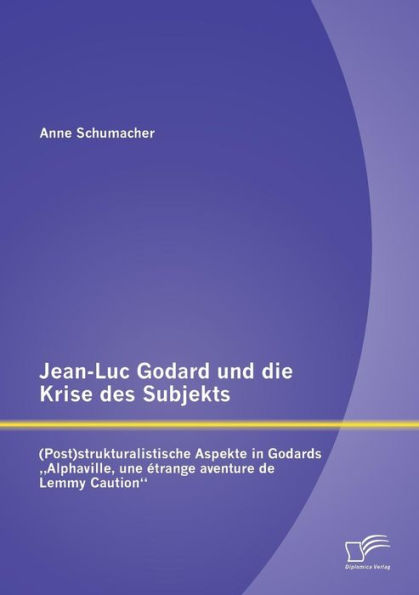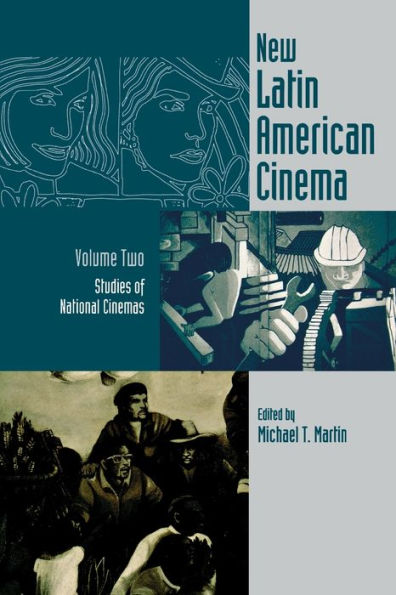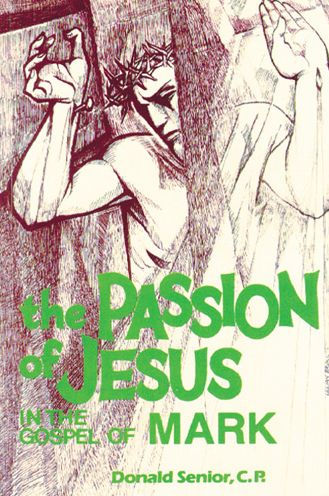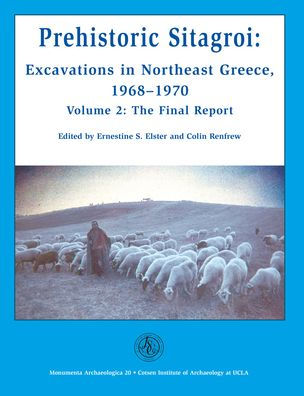Home
Jean-Luc Godard: The Passion of Cinema: Volume 2: 1968 Onwards
Barnes and Noble
Loading Inventory...
Jean-Luc Godard: The Passion of Cinema: Volume 2: 1968 Onwards in Franklin, TN
Current price: $25.99
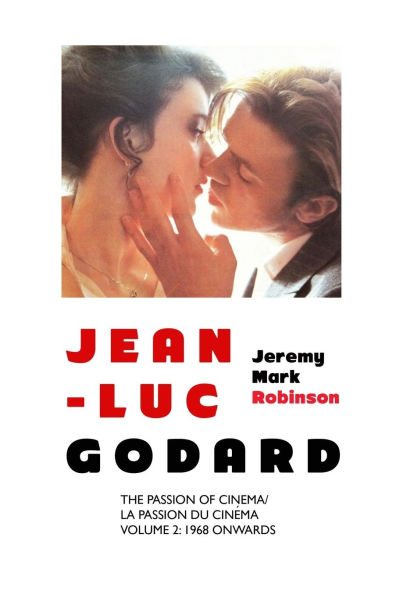
Barnes and Noble
Jean-Luc Godard: The Passion of Cinema: Volume 2: 1968 Onwards in Franklin, TN
Current price: $25.99
Loading Inventory...
Size: OS
JEAN-LUC GODARD: THE PASSION OF CINEMA
VOLUME 2: 1968 ONWARDS
By Jeremy Mark Robinson
There's no one else quite like Jean-Luc Godard, one of the most significant and inspiring filmmakers of recent times. Where the flood of movies globally now runs into many thousands, Godard's works stand out as original, acerbic, romantic, ironic, controversial, humorous and explorative.
This book considers all of Godard's works in cinema, from his early short films and the important success and cultural impact of Breathless through the remarkable series of movies of the 1960s to the latest feature films.
The book is split into two volumes:
Jean-Luc Godard: The Passion of Cinema/ Le Passion de Cinema: Volume 1: To 1968
Jean-Luc Godard: The Passion of Cinema/ Le Passion de Cinema: Volume 2: From 1968
Volume 2 includes a biography of Godard; an exploration of aspects of his cinema; and chapters on movies such as Tout Va BIen, the political films of the Dziga Vertov period (1968-73), Passion, First Name: Carmen, Slow Motion, Detective, King Lear, J.L.G./ J.L.G., New Wave, Woe Is Me, Hail Mary, later works such as Socialism, Goodbye To Language, In Praise of Love and Our Music, and Godard's masterpiece, a history of cinema.
EXTRACT FROM THE CHAPTER ON HISTOIRE(S) DU CINEMA
Jean-Luc Godard produced an epic history of cinema, between 1989 and 1998, Histoire(s) du Cinéma (which means Stor(ies) of Cinema, as well as Histor(ies) of Cinema). This was a major work, and has generated a good deal of critical comment. As well as being a history of cinema, it was also a history of the age - and a history of Godard himself. It was completed in 1998 (but may develop further): there were five audio CDs (from Edition of Contemporary Music Records),2 a video release of the 8 parts on video from Gaumont (running to 266 minutes), and a boxed set of 4 books from Gallimard.3 A 90-minute 'best of' film was edited for cinemas: Le Moment choisi des Histoire(s) de cinéma, 2004).
In Histoire(s) du Cinéma, Jean-Luc Godard delivered a poetic document of cinema in his highly idiosyncratic style of overlays and endless quotations, a montage style all his own, which combined multiple voices, layers of sounds and music, sound clips from films, captions, and an endless stream of visuals (interspersed with images of Godard at work in his offices, typing or writing or talking). Histoire(s) du Cinéma was a super-dense collage of photos, music, sounds and movie clips, written texts, taking in prints (Rembrandt, Doré), paintings (Turner, Moreau, Renoir, Goya, Grünewald, Delacroix, Kandinsky, van Gogh, Uccello, Klimt, Gentileschi, Giotto, Botticelli, Angelico, Fuseli, Caravaggio, Blake, El Greco, Piero, Monet, Manet, Picasso, Byzantine ikons), writers (Rimbaud, Céline, Brecht, Bataille, Faulkner, Flaubert, Duras, Valéry, Hugo, Dante, Ovid, Aragorn, Malraux, Proust, Gide), ciné-heroes like Henri Langlois, newsreel, pornography, television, and complex video techniques, such as super-impositions, irses, masked frames, visual mixes, flash cuts, repeated phrases, and echo and reverb effects on voices and sounds. And it's Godard's vision, his narration, his philosophy, his ideas, and his emotions that unites it all, that makes it all work. Certainly there are very few filmmakers on the planet who could've pulled it off.
Fully illustrated. Bibliography, filmography, Godardisms and notes.
VOLUME 2: 1968 ONWARDS
By Jeremy Mark Robinson
There's no one else quite like Jean-Luc Godard, one of the most significant and inspiring filmmakers of recent times. Where the flood of movies globally now runs into many thousands, Godard's works stand out as original, acerbic, romantic, ironic, controversial, humorous and explorative.
This book considers all of Godard's works in cinema, from his early short films and the important success and cultural impact of Breathless through the remarkable series of movies of the 1960s to the latest feature films.
The book is split into two volumes:
Jean-Luc Godard: The Passion of Cinema/ Le Passion de Cinema: Volume 1: To 1968
Jean-Luc Godard: The Passion of Cinema/ Le Passion de Cinema: Volume 2: From 1968
Volume 2 includes a biography of Godard; an exploration of aspects of his cinema; and chapters on movies such as Tout Va BIen, the political films of the Dziga Vertov period (1968-73), Passion, First Name: Carmen, Slow Motion, Detective, King Lear, J.L.G./ J.L.G., New Wave, Woe Is Me, Hail Mary, later works such as Socialism, Goodbye To Language, In Praise of Love and Our Music, and Godard's masterpiece, a history of cinema.
EXTRACT FROM THE CHAPTER ON HISTOIRE(S) DU CINEMA
Jean-Luc Godard produced an epic history of cinema, between 1989 and 1998, Histoire(s) du Cinéma (which means Stor(ies) of Cinema, as well as Histor(ies) of Cinema). This was a major work, and has generated a good deal of critical comment. As well as being a history of cinema, it was also a history of the age - and a history of Godard himself. It was completed in 1998 (but may develop further): there were five audio CDs (from Edition of Contemporary Music Records),2 a video release of the 8 parts on video from Gaumont (running to 266 minutes), and a boxed set of 4 books from Gallimard.3 A 90-minute 'best of' film was edited for cinemas: Le Moment choisi des Histoire(s) de cinéma, 2004).
In Histoire(s) du Cinéma, Jean-Luc Godard delivered a poetic document of cinema in his highly idiosyncratic style of overlays and endless quotations, a montage style all his own, which combined multiple voices, layers of sounds and music, sound clips from films, captions, and an endless stream of visuals (interspersed with images of Godard at work in his offices, typing or writing or talking). Histoire(s) du Cinéma was a super-dense collage of photos, music, sounds and movie clips, written texts, taking in prints (Rembrandt, Doré), paintings (Turner, Moreau, Renoir, Goya, Grünewald, Delacroix, Kandinsky, van Gogh, Uccello, Klimt, Gentileschi, Giotto, Botticelli, Angelico, Fuseli, Caravaggio, Blake, El Greco, Piero, Monet, Manet, Picasso, Byzantine ikons), writers (Rimbaud, Céline, Brecht, Bataille, Faulkner, Flaubert, Duras, Valéry, Hugo, Dante, Ovid, Aragorn, Malraux, Proust, Gide), ciné-heroes like Henri Langlois, newsreel, pornography, television, and complex video techniques, such as super-impositions, irses, masked frames, visual mixes, flash cuts, repeated phrases, and echo and reverb effects on voices and sounds. And it's Godard's vision, his narration, his philosophy, his ideas, and his emotions that unites it all, that makes it all work. Certainly there are very few filmmakers on the planet who could've pulled it off.
Fully illustrated. Bibliography, filmography, Godardisms and notes.
JEAN-LUC GODARD: THE PASSION OF CINEMA
VOLUME 2: 1968 ONWARDS
By Jeremy Mark Robinson
There's no one else quite like Jean-Luc Godard, one of the most significant and inspiring filmmakers of recent times. Where the flood of movies globally now runs into many thousands, Godard's works stand out as original, acerbic, romantic, ironic, controversial, humorous and explorative.
This book considers all of Godard's works in cinema, from his early short films and the important success and cultural impact of Breathless through the remarkable series of movies of the 1960s to the latest feature films.
The book is split into two volumes:
Jean-Luc Godard: The Passion of Cinema/ Le Passion de Cinema: Volume 1: To 1968
Jean-Luc Godard: The Passion of Cinema/ Le Passion de Cinema: Volume 2: From 1968
Volume 2 includes a biography of Godard; an exploration of aspects of his cinema; and chapters on movies such as Tout Va BIen, the political films of the Dziga Vertov period (1968-73), Passion, First Name: Carmen, Slow Motion, Detective, King Lear, J.L.G./ J.L.G., New Wave, Woe Is Me, Hail Mary, later works such as Socialism, Goodbye To Language, In Praise of Love and Our Music, and Godard's masterpiece, a history of cinema.
EXTRACT FROM THE CHAPTER ON HISTOIRE(S) DU CINEMA
Jean-Luc Godard produced an epic history of cinema, between 1989 and 1998, Histoire(s) du Cinéma (which means Stor(ies) of Cinema, as well as Histor(ies) of Cinema). This was a major work, and has generated a good deal of critical comment. As well as being a history of cinema, it was also a history of the age - and a history of Godard himself. It was completed in 1998 (but may develop further): there were five audio CDs (from Edition of Contemporary Music Records),2 a video release of the 8 parts on video from Gaumont (running to 266 minutes), and a boxed set of 4 books from Gallimard.3 A 90-minute 'best of' film was edited for cinemas: Le Moment choisi des Histoire(s) de cinéma, 2004).
In Histoire(s) du Cinéma, Jean-Luc Godard delivered a poetic document of cinema in his highly idiosyncratic style of overlays and endless quotations, a montage style all his own, which combined multiple voices, layers of sounds and music, sound clips from films, captions, and an endless stream of visuals (interspersed with images of Godard at work in his offices, typing or writing or talking). Histoire(s) du Cinéma was a super-dense collage of photos, music, sounds and movie clips, written texts, taking in prints (Rembrandt, Doré), paintings (Turner, Moreau, Renoir, Goya, Grünewald, Delacroix, Kandinsky, van Gogh, Uccello, Klimt, Gentileschi, Giotto, Botticelli, Angelico, Fuseli, Caravaggio, Blake, El Greco, Piero, Monet, Manet, Picasso, Byzantine ikons), writers (Rimbaud, Céline, Brecht, Bataille, Faulkner, Flaubert, Duras, Valéry, Hugo, Dante, Ovid, Aragorn, Malraux, Proust, Gide), ciné-heroes like Henri Langlois, newsreel, pornography, television, and complex video techniques, such as super-impositions, irses, masked frames, visual mixes, flash cuts, repeated phrases, and echo and reverb effects on voices and sounds. And it's Godard's vision, his narration, his philosophy, his ideas, and his emotions that unites it all, that makes it all work. Certainly there are very few filmmakers on the planet who could've pulled it off.
Fully illustrated. Bibliography, filmography, Godardisms and notes.
VOLUME 2: 1968 ONWARDS
By Jeremy Mark Robinson
There's no one else quite like Jean-Luc Godard, one of the most significant and inspiring filmmakers of recent times. Where the flood of movies globally now runs into many thousands, Godard's works stand out as original, acerbic, romantic, ironic, controversial, humorous and explorative.
This book considers all of Godard's works in cinema, from his early short films and the important success and cultural impact of Breathless through the remarkable series of movies of the 1960s to the latest feature films.
The book is split into two volumes:
Jean-Luc Godard: The Passion of Cinema/ Le Passion de Cinema: Volume 1: To 1968
Jean-Luc Godard: The Passion of Cinema/ Le Passion de Cinema: Volume 2: From 1968
Volume 2 includes a biography of Godard; an exploration of aspects of his cinema; and chapters on movies such as Tout Va BIen, the political films of the Dziga Vertov period (1968-73), Passion, First Name: Carmen, Slow Motion, Detective, King Lear, J.L.G./ J.L.G., New Wave, Woe Is Me, Hail Mary, later works such as Socialism, Goodbye To Language, In Praise of Love and Our Music, and Godard's masterpiece, a history of cinema.
EXTRACT FROM THE CHAPTER ON HISTOIRE(S) DU CINEMA
Jean-Luc Godard produced an epic history of cinema, between 1989 and 1998, Histoire(s) du Cinéma (which means Stor(ies) of Cinema, as well as Histor(ies) of Cinema). This was a major work, and has generated a good deal of critical comment. As well as being a history of cinema, it was also a history of the age - and a history of Godard himself. It was completed in 1998 (but may develop further): there were five audio CDs (from Edition of Contemporary Music Records),2 a video release of the 8 parts on video from Gaumont (running to 266 minutes), and a boxed set of 4 books from Gallimard.3 A 90-minute 'best of' film was edited for cinemas: Le Moment choisi des Histoire(s) de cinéma, 2004).
In Histoire(s) du Cinéma, Jean-Luc Godard delivered a poetic document of cinema in his highly idiosyncratic style of overlays and endless quotations, a montage style all his own, which combined multiple voices, layers of sounds and music, sound clips from films, captions, and an endless stream of visuals (interspersed with images of Godard at work in his offices, typing or writing or talking). Histoire(s) du Cinéma was a super-dense collage of photos, music, sounds and movie clips, written texts, taking in prints (Rembrandt, Doré), paintings (Turner, Moreau, Renoir, Goya, Grünewald, Delacroix, Kandinsky, van Gogh, Uccello, Klimt, Gentileschi, Giotto, Botticelli, Angelico, Fuseli, Caravaggio, Blake, El Greco, Piero, Monet, Manet, Picasso, Byzantine ikons), writers (Rimbaud, Céline, Brecht, Bataille, Faulkner, Flaubert, Duras, Valéry, Hugo, Dante, Ovid, Aragorn, Malraux, Proust, Gide), ciné-heroes like Henri Langlois, newsreel, pornography, television, and complex video techniques, such as super-impositions, irses, masked frames, visual mixes, flash cuts, repeated phrases, and echo and reverb effects on voices and sounds. And it's Godard's vision, his narration, his philosophy, his ideas, and his emotions that unites it all, that makes it all work. Certainly there are very few filmmakers on the planet who could've pulled it off.
Fully illustrated. Bibliography, filmography, Godardisms and notes.
